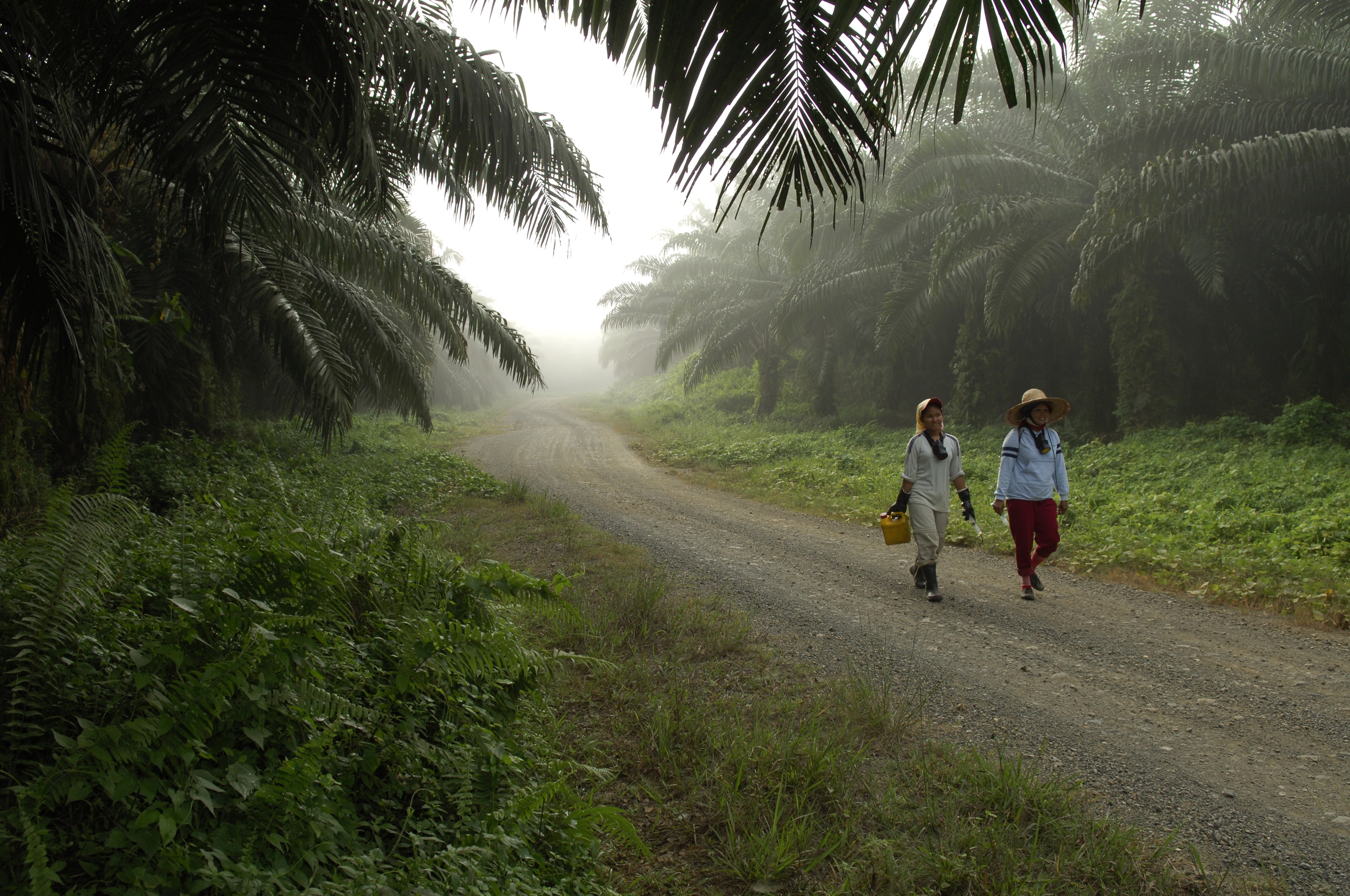In an challenging recent book, ‘Malaysia at a Crossroads. Can we make the Transition?’ (Abdul Rahman Embong and Tham Siew Yean, 2011), colleagues of mine from IKMAS (Institute of Malaysian and International Studies) at the Universiti Kebangsaan Malaysia (UKM) floated the idea of a ‘critical transition’ for Malaysia (p.17). This involves significant changes in social structure and relations, and in the politics, economy and culture of Malaysian society. The impetus for such transition is associated with the reformasi movement and consequent altering aspirations since the 1990s.
As an involved outsider, I see clearly that transition is needed, and agree with my UKM colleagues in their further prescription that this will involve key elements of investment, technology upgrading, institutional reform and changes in state-society relations. These elements are applicable to Malaysian agriculture, which is my personal preoccupation.
Malaysian agriculture has largely missed out in discussions about Malaysia’s future. It does not even get much attention in the 10th Malaysia Plan (2011-2015). But in fact agriculture, along with fisheries and forestry, still accounts for 7-8 percent of Malaysia’s gross domestic product, which is a high level for a country at Malaysia’s stage of economic development. The sector also involves around one million workers, with about half of these being temporary migrants. Parts of the agricultural sector are highly dynamic, and have good potential for the future. But there are also numerous emerging problems needing to be considered in future transformation.
The scope of the agricultural sector is reflected in Table 1, which presents the areas of the main crops in 2012. The Table shows the huge predominance of oil palm in the total estimated crop area of 6.8 million hectares, followed by smaller extents of rubber and rice. It also denotes the relative roles in cultivation of the three main types of Malaysian agricultural entity – the estates, the land development schemes and the independent smallholdings.
Table 1: Crop Areas on Estates, Land Development Schemes and Individual Smallholdings in Malaysia, 2012 (‘000 hectares)
|
Oil Palm |
Rubber |
Rice |
Other |
Total |
|
| Estates | 2,707 |
61 |
.. | 10 |
2,778 |
| Land DevelopmentSchemes |
1,243 |
226 |
2 |
8 |
1,479 |
| Independent Smallholdings |
540 |
960 |
680 |
420 |
2,600 |
| Grand Totals |
4,490 |
1,247 |
682 |
438 |
6,857 |
The estates are what many people term ‘plantations’, with individual units being large and commonly covering 2,000-10,000 hectares. The units are often grouped in big estate companies. The biggest of all, Sime Darby, controls 500,000 hectares of which 300,000 hectares are in Malaysia. The land development schemes are also extensive, with those managed by the Federal Land Development Authority (Felda) being the most significant and being frequently managed like estates. In contrast, independent smallholdings are limited to 1-2 hectares, and are managed by family households which often only work part-time.
All agricultural entities involve foreign workers, with those on estates and land development schemes being mainly hired through contractors, while those on independent smallholdings are usually provided through dealers purchasing fresh fruit bunches or latex. A key feature of Malaysian agriculture has been the migration of younger people to urban areas since the 1980s, with numerous estates today having almost lost their original Malaysian workers, and with land development schemes and smallholdings being chiefly inhabited by older people. Harvesting oil palm bunches with long sickles, for example, is difficult for older people, and without the foreign workers would be largely impossible. It is predominantly a job for young males of 20-35, who can easily conduct such work on a regular basis.
Oil palm and rubber
Oil palm and rubber continue to do well, despite their reliance on migrant labour. Palm oil commands relatively high international prices, which are sustained by high persisting demand in both the food and non-food sectors. The latter is especially connected with biofuels, where petroleum is predicted to grow scarcer in relation to burgeoning global consumption. Rubber too remains a vital industrial product, and has seen a quadrupling of price over the last decade. It also has favourable forecasts for the future. Returns to producers from these crops are accordingly high, and there is as well substantial ‘downstream’ development into manufactured products. Hence both estates and Felda have important manufacturing interests, which are also taking in palm oil and rubber produced in neighbouring countries.
Another positive feature of both oil palm and rubber are the associated research facilities, mainly financed by government but also operated by estate companies. These have produced a stream of vital new innovations over the years, enabling crop productivity and quality to be raised and costs to be reduced. Such innovations can be readily absorbed by the estates and land development schemes with their centralised management structure and access to capital, but are more difficult to adopt on independent smallholdings. This research continues strongly, although the emphasis has moved to some extent to facilitating downstream aspects that enable Malaysia to compete effectively on international markets.
Despite this good picture, however, there are major problems for the future, one being the rising cost of labour associated with increasing wages in neighbouring countries from which workers are recruited. It is not unusual in 2012, for example, for workers in West Java to earn Rp1.600.000 ( RM600) per month. This is still below the Malaysian plantation wage, but the rapid expansion of Indonesian manufacturing could push Jakarta wages up to RM1,000 per month within a few years. At that stage Indonesian workers would hesitate to come to Malaysia without wage increases well above this level. Such increases can be absorbed by the Malaysian oil palm and rubber producers, but will reduce profits substantially. This development emphasises the importance of labour-saving technologies, which are easier to secure in rubber than in oil palm.
Another emerging difficulty is the growing scarcity of land for further expansion. The estates have doubled in area over the last two decades, and would like to expand further in a move I personally believe undesirable. But the overall difficulty of scarce land is connected with the need for woodland preservation, where the general Malaysian consensus appears to be that 50 per cent of the land area should be retained as forest. The figure is below that already on the peninsula, but above it in Sabah and Sarawak. Thus while some further expansion may occur, the emphasis will soon shift from extensifying to intensifying production on existing areas. There is good scope for further productivity rises in the intensification process, and research and extension agencies need to concentrate on this.
A further and more severe difficulty entails promoting oil palm and rubber improvements on the large sub-sector of individual smallholdings. Here there are special social and cultural problems to be dealt with, and these are examined below.
Rice
This relatively small sub-sector is a sphere where Malaysia faces continuing problems in promoting change and improvement. It is largely, although not exclusively, a subsector operated by independent Malay family households. The two overweening official policies have been to assist these households in securing better livelihoods, while at the same time obtaining self-sufficiency in national rice consumption. Thus generous policies of financial assistance and technical help have been pursued for 30 years, and have obtained some improvement. But in 2012 only 71 per cent of rice is being produced in Malaysia, while yields are still lower than those under comparable conditions elsewhere. Costs of production, on the other hand, are considerably higher. Many rice producers remain locked in to a relatively unproductive agricultural system, and the gap between their and urban incomes has grown wider.
There seems little doubt that Malaysian policymakers and Malaysians broadly favour the idea of some self-sufficiency. This is because there have been times, as in 2008 and 1974, when international rice shortages severely threatened Malaysian supplies, and such difficulties are likely to re-occur. But it should be possible to improve production facilities in a way that benefits participating farm households, while at the same time achieving part of the self-sufficiency objective. There are difficulties in land tenure which need to be overcome so farmers can get bigger holdings, and an urgent need for improvements in extension along the lines suggested below.
Looking to the future
As already noted, the four elements in critical transition of investment, technology upgrading, institutional reform and changes in state-society relations all have roles in transforming Malaysian agriculture. There is indeed continuing investment and technology upgrading in the cases of the Malaysian estate and land development sub-sectors. The directions of this investment and upgrading nevertheless raise many questions, and there are additional issues of institutional structure and of how the state should act in facilitating progress. These important aspects of transition will be explored in a subsequent contribution.
The focus of the remaining discussion will be on the role of the four elements in critical transition to improving the most backward sector of Malaysian agriculture, the independent smallholdings. These smallholdings, which in different parts of Malaysia are importantly involved in cultivating oil palm, rubber and rice, have big potentials for better performance. They are also in many ways the most important players in the total Malaysian rural scene.
The basic goal in improvement of independent smallholdings is to build a modern dynamic small farm agriculture, based largely on family households and producing returns which at least match those secured from alternative urban enterprises. This goal is not easy to attain, and is attended by needs for change in many social and cultural aspects springing from traditional society. One need is the institutional reform of land tenure, which as suggested above restricts possible increases in holding size. Such tenure is a State matter in Malaysia, and deserves far more attention than it has done to date. Another need is in technology upgrading through providing more information, and this is associated with the further need for investment in funding new innovations.
There is finally the state-society need for government to facilitate the other 3 needs of critical transition. One major vehicle for this is the provision by government of an extension service effectively supplying information and training, and facilitating the provision of appropriate funding. Good extension services have been crucial to small farm development in many countries around the world, with part of this process entailing progressive adjustment by extension personnel to the burgeoning needs of small farmers. A promising recent start to this end in Malaysia was the initiation three years ago of the ‘Tunas’ oil palm extension service of the Malaysian Palm Oil Board, which is now directed to assisting oil palm independent smallholders and administering planting grants for establishing high-yielding materials. This national service of some 200 extension officers, backed up by specialists, is an effective example of what can be done.
Malaysian agriculture is a sphere of major economic potential, whose transformation needs to be underlaid by substantial social change. There are many possibilities of improvement, and these deserve to be actively canvassed. National discussions of agricultural improvement have however, been unduly limited, and that the sector deserves more attention in policy thinking and implementation.
Dr. Colin Barlow has worked on the socio-economic problems of Malaysian agriculture for many years, being especially involved with oil palm and rubber. He is currently CEO of the Nusa Tenggara Association, an Australian NGO engaged in rural development in eastern Indonesia. He is a visiting fellow in the Department of Political and Social Change at the Australian National University.
Reference
Abdul Rahman Embong and Tham Siew Yean (eds, 2011), Malaysia at a Crossroads. Can we make the Transition? Bangi: Penerbit Universiti Kebangsaan Malaysia.
Jati Bening, Bekasi, Indonesia, 27th April, 2012.
 Facebook
Facebook  Twitter
Twitter  Soundcloud
Soundcloud  Youtube
Youtube  Rss
Rss 